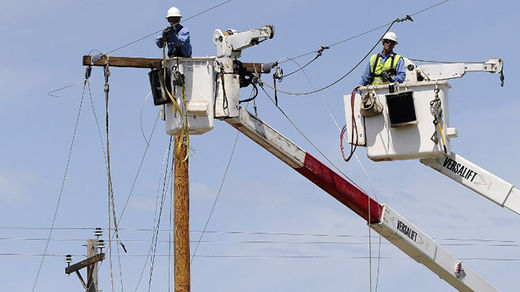
© AFP Photo / Jewel Samad
Almost 500,000 US homes and business were without power on Friday after a series of severe storms ripped through the Mid-Atlantic, downing trees and power lines. One woman was fatally struck by lightning and a 4-year-old was killed by an uprooted tree.
The storm system brought tornadoes, high winds, lightning, flash floods and thunderstorms to the Midwest and Mid-Atlantic, but it was not as severe as meteorologists initially anticipated.
On Wednesday, meteorologists
forecast that a 240-mile wide storm with 58 mph winds, known as a "derecho", would cause severe damages across 10 US states. The storm system was less severe than predicted, but nevertheless left at least 500,000 homes and businesses without power on Friday, mostly in the Mid-Atlantic.
A bridge that leads to Maryland's Eastern shore was temporarily closed when the storm system arrived Thursday afternoon, and two schools were closed in Montgomery County, Maryland,on Friday. Several schools that lost power in North Carolina were also closed the morning after.
In Atlanta, winds were as high as 70 mph and 900 lighting strikes were reported in a 10-minute span, CNN affiliate WBC TV reported.
Three tornadoes were reported in Maryland, and two storm-related deaths occurred in the Mid-Atlantic.

Comment: Comment: Reign of Fire: Meteorites, Wildfires, Planetary Chaos and the Sixth Extinction